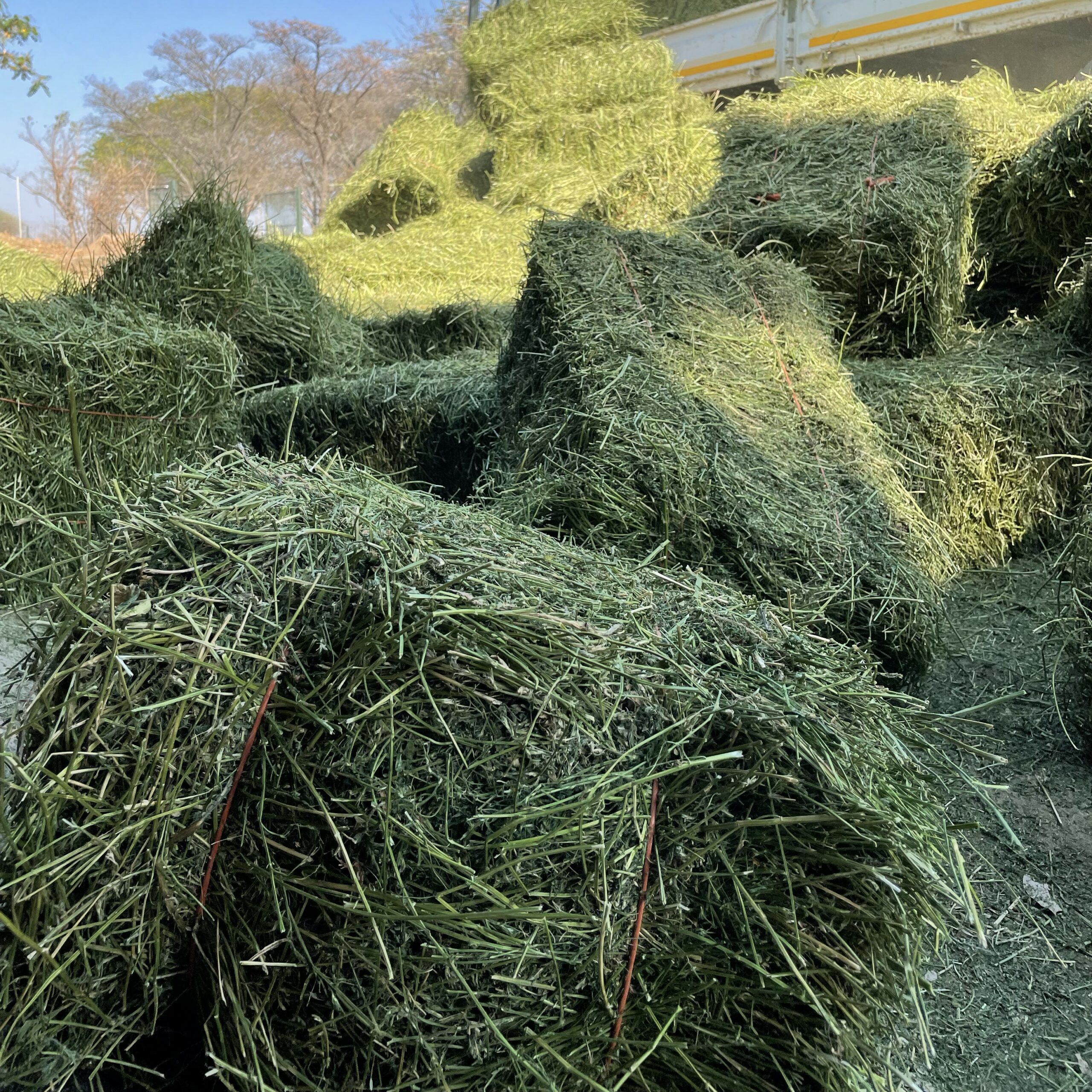In our wilderness in South Africa, we are coming out of a long dry winter that kept us all covered, including little Khanyisa in her woolly and fleece blankets, in the chilly mornings and evenings. The sun is now rising much earlier and setting later, giving us more time in the day for garden grazing and sheep companion bonding. It is also heating up the reserve and treating us to the odd drizzle of rain, helping the earth to send us new green grass shoots. Throughout the seasonal changes that affect us so greatly out here, the rescued elephants in the herd have remained constantly interested in one of their favourite past times… swimming.
These swimming trunks have taken to the waterhole for shallow and deep dips, or mud wallows and sand showers on the edges of the dam, and little albino calf Khanyisa has stayed close to adoptive mother Lundi’s legs throughout. Wherever Lundi goes, Khanyisa goes. Although the calf is developing a firm independent mind of her own and does sometimes wander off from the dam into the bushes. Allomother Kumbura is always close by and following after the youngest member in the herd. It’s remarkable to watch and incredibly heartwarming. The herd’s social dynamics certainly make a grand appearance when the herd are together at the dam, and each elephant has their own approach to the water.
Fishan, Bubi, Timisa, Limpopo, Zindoga, Mambo and Jabulani are the big swimmers in the Jabulani herd, along with Sebakwe, but all African elephants enjoy frequent swims, splashes or drinks when water is available. They are the only mammals that can remain submerged deep below the water’s surface while snorkelling.
Elephants don’t just drink water, they use it for evaporative cooling, they play in it, wallow in it, bond in it, and swim across it in cases of rivers to get to greener pastures. They are strong and natural swimmers (unlike humans, who need to learn to swim) and recent studies have even suggested that elephants may have an aquatic ancestry and that the trunk may have developed for snorkelling. Science has revealed that they used to live partially in water – back in the age of an ancient elephant ancestor called Moeritherium, which spent most of its time in rivers and swamps.
Because of their natural ability to float and a trunk which acts as a snorkel, they can swim for hours without stopping. Their massive bodies help them to float with ease and rest when they wish, but elephants can also walk along the bottom of the dam or river when it’s shallow enough, with their trunks out for breathing.
In addition to the help from their long proboscis, their lungs are uniquely adapted to deal with the pressure changes caused by snorkelling – or when inhaling large volumes of water into the trunk before drinking or spraying it onto the skin.
Their trunks are phenomenal for many reasons but while watching them beside the coolness of a dam, drinking from the banks, you can see how they use these strong organs to suck up and hold water (up to around 12 litres), which they pour into their mouths to swallow. With their incredible olfactory skills, the trunks can also identify water sources from a great distance away, scents they can commit to their long-term memory.
In the water, the bulls get a little extra energised from time to time and take to playful sparring in or beside the water, whether it’s the young bulls, Mambo and Zindoga, or Mambo taking on Sebakwe. This tussling is a show and sussing out of one another’s strength, often with water splashing this way and that between the gently boisterous shoves and pushes.
Elephants’ caring and fiercely protective nature as a herd can also be seen at the waterhole. With little albino calf, Khanyisa joining the Jabulani herd now for swims during their days out in the reserve, some of the elephants will always rally around her, keeping her close and well-monitored to ensure that she doesn’t drown or get into trouble. Whether around the muddy edges or in the deep (which is obviously much deeper for her little legs than those tree trunk legs of the great Sebakwe), they are always only a foot or trunk away from nudging her to safety.
Observing the herd in the waterhole is a great teacher of elephant behaviour, from the elephants’ first dash to the dam to the last muddy rub up and down against a tree on the way out. Witnessing the playing, bonding, bathing, learning, sparring, breathing, spraying, splashing, submerging and drinking, you also realise how important water is in the lives of elephants, in the lives of us all.




 Comment
Comment






